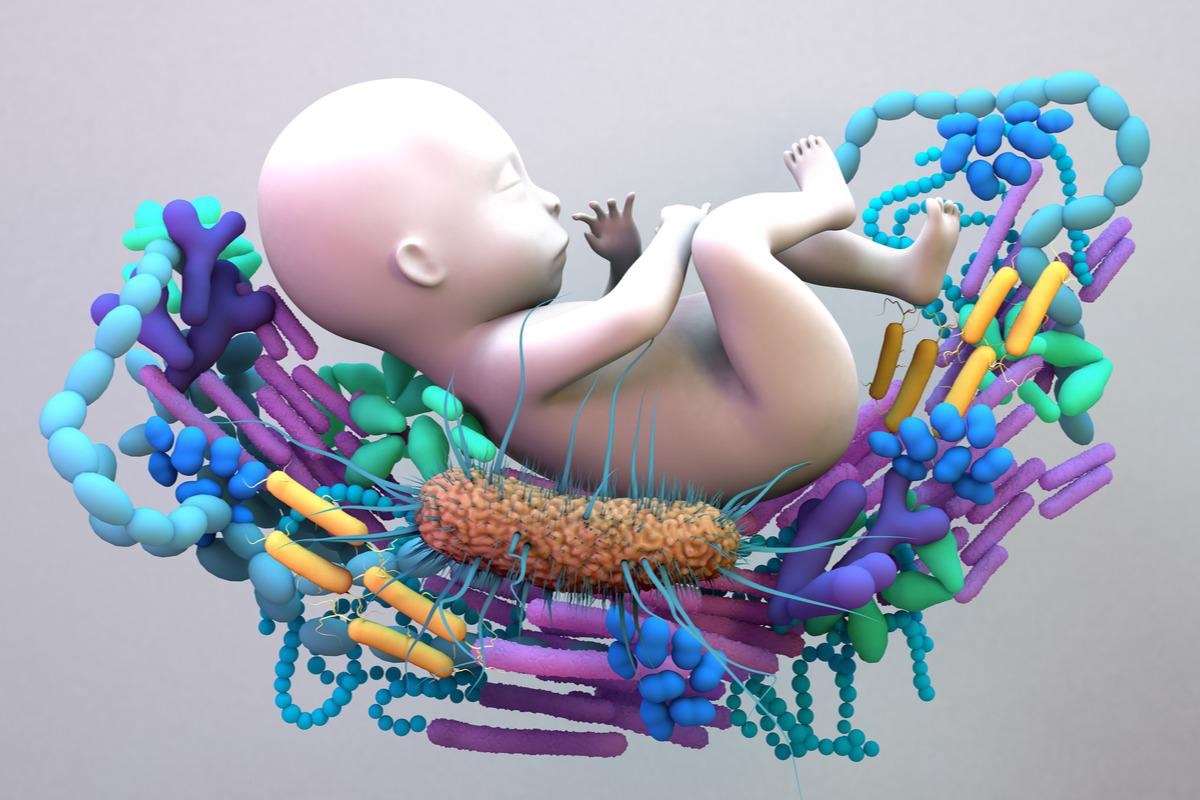A recent study published in Science noted that infant gut microbiome assembly varies with lifestyles. A complex process of gut microbiome assembly begins shortly after human birth. New microbial species colonizing the gut depend on niches established by previous colonizing species. Therefore, the gut microbiome composition in adults might be contingent on the microbes acquired in early life.

Background
The microbiome assembly process is well characterized for infants in industrialized nations and leads to a gut microbiome of low diversity, characteristic of adults from these places. Nonetheless, the microbiome assembly process in infants from non-industrialized regions, which results in characteristically diverse microbiomes in adults, is poorly defined.
The Hadza tribe is a group of indigenous Tanzanian hunter-gatherers inhabiting seminomadic bush camps with a moderate level of communal child-rearing. The infants are breastfed early in life and later weaned to a diet comprising baobab powder and pre-masticated meat by the age of two years.
The study and findings
In the present study, researchers performed metagenome sequencing on fecal samples of infants from the Hadza ethnic group. The research team curated a dataset of 1m,900 16S ribosomal ribonucleic acid (rRNA) sequences in fecal samples of healthy infants from 18 populations, including 62 samples from Hadza infants. Deep metagenomic sequencing was performed on 39 samples of Hadza infants and corresponding maternal samples for 23 children.
When populations with different lifestyles within the same nation were compared, the authors noted that shared lifestyles strongly affected microbiome composition more than geographic proximity. The microbiome of children living industrialized lifestyles showed a divergence from others by six months of life. In contrast, for infants living a transitional lifestyle, the microbiome diverged from others approximately by 30 months of life.
Five microbial co-abundance groups (CAGs) were identified, which, on average, constitute over 93% of microbiota composition in each sample. Early in life, i.e., up to six months, the Bifidobacterium-Streptococcus CAG was predominant in all infants regardless of lifestyle. Over time, Bacteroides-Ruminococcus CAG in industrialized infants and Prevotella-Fecalibacterium CAG in transitional or non-industrialized infants were observed.
Next, from the deep metagenome sequencing analysis, the authors found broad age- and lifestyle-associated differences in the functional capacity of microbiomes in infants. The Hadza infant metagenomes were binned into metagenome-assembled genomes (MAGs) encompassing 745 species. Notably, more than 23% represented novel species relative to the Unified Human Gastrointestinal Genome collection.
A comprehensive dataset comprising 5,755 species-representative genomes was created by integrating MAGs with Hadza adults’ genomes and publicly available human gut genomes. About 23.4% of genomes in Hadza infants belonged to novel species, supporting that extensive uncharacterized species diversity exists in the Hadza infant gut, similar to Hadza adults. Moreover, with the industrializing lifestyles, more microbial species were lost than gained.
Bifidobacterium was the most prevalent taxon early in life, and B. infantis was the predominant species in non-industrialized infants during their first six months, which depletes in industrialized infants or is maintained at intermediate levels in infants with transitional lifestyles during that timeframe. Instead, B. breve is the abundant Bifidobacterium species in industrialized infants.
Assessing strain-level differences among genomic sequences of B. infantis from infants aged 0-1 years revealed that the enzyme, glycoside hydrolase family 163 (GH163), was enriched in non-industrialized infants relative to industrialized infants. Furthermore, 20 B. infantis strains from fecal samples of Hadza infants were isolated and subject to sequencing. GH163 enrichment was also observed in B. infantis isolates of Hadza infants compared to public reference sequences.
Besides, a solid lifestyle-specific phylogenetic clustering was evident among the sequences from B. infantis isolates and MAGs. This might indicate the occurrence of long-term vertical transmission over multiple generations. The researchers then examined the degree of vertical transmission in Hadza infants by deep sequencing fecal samples from 23 corresponding mothers (Hadza dyads).
On average, dyad pairs had far more common/shared strains than non-dyad pairs. Non-dyads living in the same Hadza bush camps also shared more strains than those living in different camps. Vertical strain transmission was higher among members of Bacteroidetes and Cyanobacteria but lower among Firmicutes in the Hadza.
The strain tracking analysis was repeated on a Swedish dataset containing 100 dyads. Bacteroides and Prevotella strains were more commonly vertically transmitted in Swedish and Hadza dyads, respectively. Species that were abundant in mothers exhibited a greater likelihood of being vertically transmitted.
Conclusions
Overall, the findings demonstrated that the infant microbiome is Bifidobacteria-dominant during the early life, irrespective of lifestyle. Notably, the taxa which differentiate lifestyles within six months of life exhibited the most frequent vertical transmission. These observations also raised the intriguing question of whether the differences in gut microbiome development based on lifestyles predispose people to diseases prevalent in industrialized nations.
- Robust variation in infant gut microbiome assembly across a spectrum of lifestyles. Olm MR, Dahan D, Carter MM, et al. Science. doi: 10.1126/science.abj2972 https://www.science.org/doi/10.1126/science.abj2972
Posted in: Child Health News | Medical Science News
Tags: Children, Cyanobacteria, Diet, Enzyme, Genome, Genomic, Meat, Microbiome, Research, Ribonucleic Acid

Written by
Tarun Sai Lomte
Tarun is a writer based in Hyderabad, India. He has a Master’s degree in Biotechnology from the University of Hyderabad and is enthusiastic about scientific research. He enjoys reading research papers and literature reviews and is passionate about writing.
Source: Read Full Article